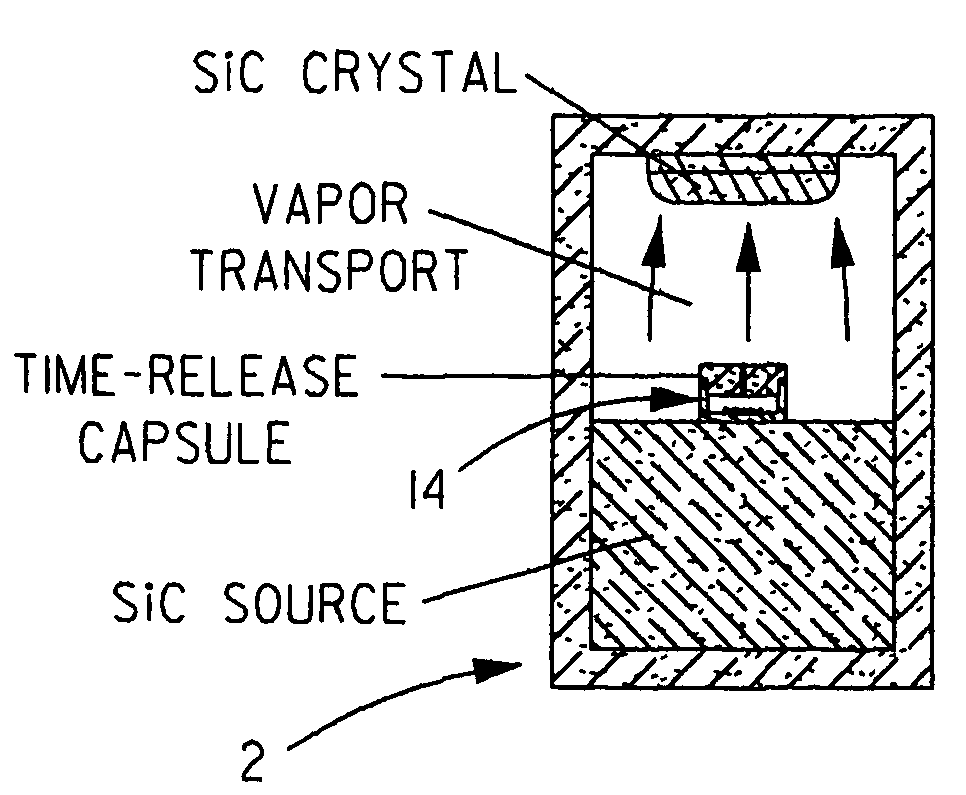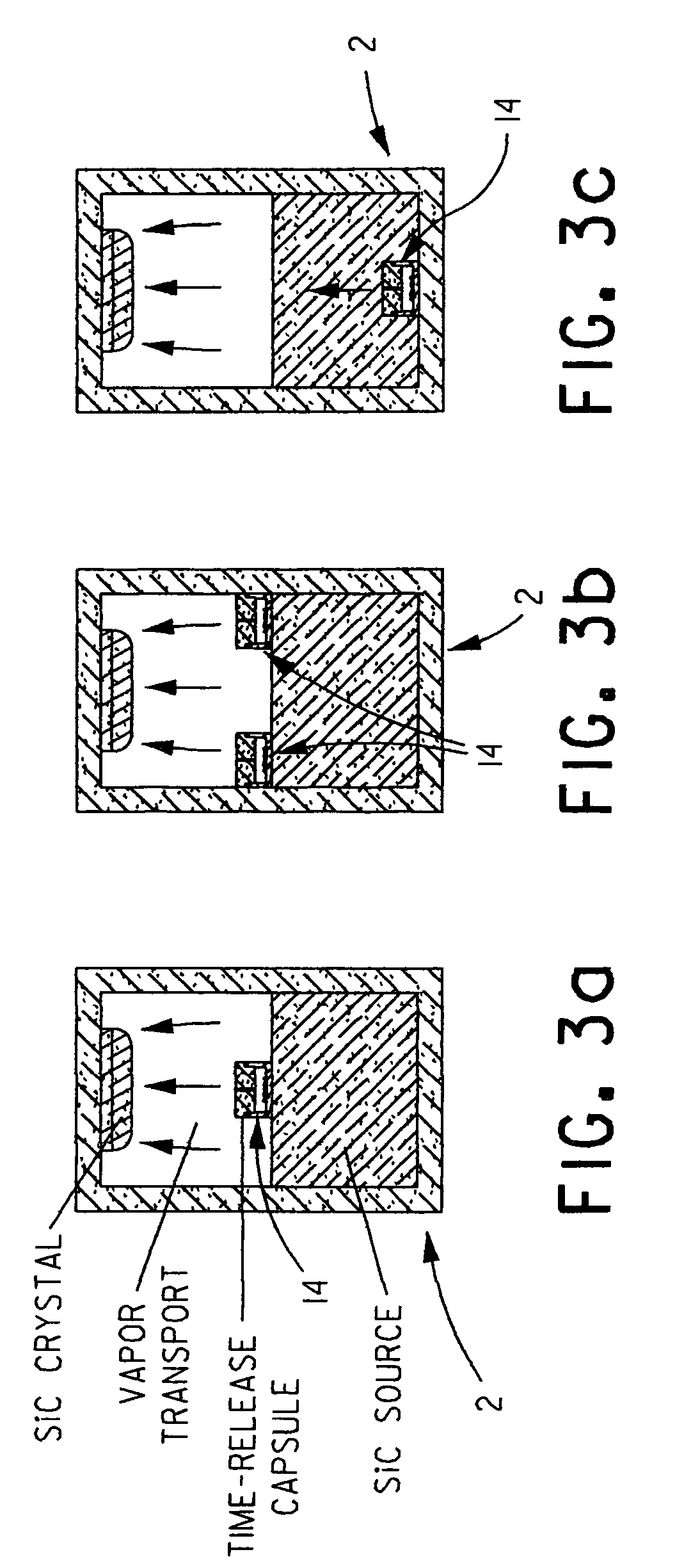Method of and system for forming SiC crystals having spatially uniform doping impurities
a technology of doping impurities and crystals, applied in the direction of crystal growth process, crystal growth process, polycrystalline material growth, etc., can solve the problems of reducing the yield of high electronic quality substrates, difficult to achieve uniform electrical properties in other types of sic crystals, so as to achieve low yield and avoid generation. , the effect of low dopant concentration
- Summary
- Abstract
- Description
- Claims
- Application Information
AI Technical Summary
Benefits of technology
Problems solved by technology
Method used
Image
Examples
example 1
[0038]In accordance with the prior art SiC crystal growth method, an appropriate amount of elemental vanadium was admixed to the SiC source 1. The SiC source / vanadium mixture and a SiC seed 4 were loaded into growth container 2 which was then evacuated and filled with an inert gas to a desired pressure. Following this, the temperature of growth container 2 was raised to a temperature sufficient to cause the growth of the SiC crystal 5.
[0039]Thereafter, the grown SiC crystal 5 boule was sliced into wafers and the impurity content for vanadium and other elements was measured using Secondary Ion Mass Spectroscopy (SIMS) in wafer #2 and wafer #17 (the last wafer in the boule). The results showed that wafer #2 contained vanadium at about 1.4×1017 cm−3 while wafer #17 contained vanadium at about 2×1014 cm−3.
[0040]With reference to FIG. 4, the resistivity of each wafer obtained from the grown boule was measured and plotted. In the plot, each point represents an average resistivity for the ...
example 2
[0043]In accordance with a SiC crystal growth method of the present invention, a capsule 14 having a capillary 16 of 1.5 mm in diameter and 6 mm long was loaded with 1 g of pure vanadium carbide (VC0.88, 99.999+%). Capsule 14 was positioned atop the SiC source 1 in growth container 2. All other parameters of this growth run were in accordance with existing standard technological procedures.
[0044]After finishing this growth run and cooling to room temperature, capsule 14 was recovered and its content investigated. A pellet of sintered vanadium carbide was found inside capsule 14. Chemical analysis of the pellet showed that it consisted of vanadium and carbon in the stoichiometric ratio of VCx (x≈0.8) with traces of silicon accounting for less than 3 weight %. Thus, there was no major chemical transformation in capsule 14 during growth, and vanadium was preserved in its stable form of vanadium carbide. The traces of silicon could be a result of silicon diffusion through the capsule wa...
example 3
[0047]In accordance with a SiC crystal growth method of the present invention, a capsule 14 having a capillary 16 of 1.5 mm in diameter and 6 mm long was loaded with 1 g of elemental vanadium of 99.995% purity. Capsule 14 was positioned atop the SiC source 1 in growth container 2. All other parameters of this growth run were in accordance with existing standard technological procedures.
[0048]After finishing this growth run and cooling to room temperature, the capsule content was investigated. It was found that during heating to the growth temperature, vanadium melted and reacted with carbon of the capsule wall to form stable vanadium carbide, VCx with x≈0.9. No further chemical transformations occurred during growth cycle.
[0049]The grown boule was sliced into wafers, two of which, wafer #03 and wafer #17 (the last wafer of the boule), were analyzed for impurity content using SIMS. The results showed that wafer #03 contained vanadium at a level of 3.4×1016 cm−3 while wafer #17 contai...
PUM
 Login to View More
Login to View More Abstract
Description
Claims
Application Information
 Login to View More
Login to View More - R&D
- Intellectual Property
- Life Sciences
- Materials
- Tech Scout
- Unparalleled Data Quality
- Higher Quality Content
- 60% Fewer Hallucinations
Browse by: Latest US Patents, China's latest patents, Technical Efficacy Thesaurus, Application Domain, Technology Topic, Popular Technical Reports.
© 2025 PatSnap. All rights reserved.Legal|Privacy policy|Modern Slavery Act Transparency Statement|Sitemap|About US| Contact US: help@patsnap.com



